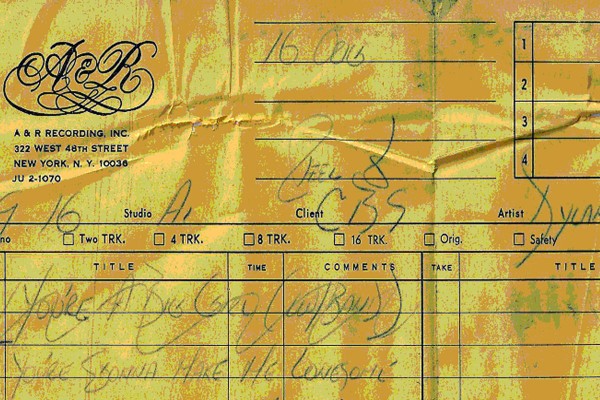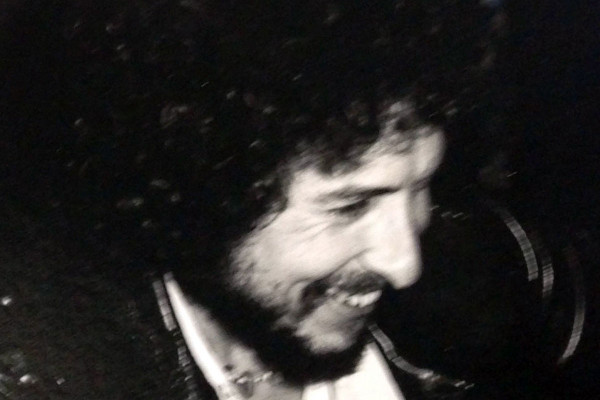Outtakes On Bob Dylan
Outtakes On Bob Dylan: Selected Writings 1967-2021 brings together five decades of contemporary writing on Bob Dylan by the pioneer of Dylan Studies, Michael Gray
Read MoreThe Making and Unmaking of Bob Dylan’s 1974 Masterpiece
Wanted Man Study Series: Take II ~ Vol.1
Limited edition monograph in hardback.
NO ONE ELSE COULD PLAY THAT TUNE is the perfect companion to the all-singing all-dancing boxed set of the complete New York sessions for Dylan’s fabled Blood On The Tracks: More Blood, More Tracks.
Clinton Heylin tracked down and interviewed just about every eye-witness still standing, including the only musician – Dylan excepted – to play at all the New York sessions; a new interview with Ellen Bernstein, Dylan’s CBS A&R girlfriend at the time; at least one engineer previously undocumented and two old Village friends who attended the initial sessions at Dylan’s behest.
He also spent a fortnight at the Tulsa Dylan archive, researching and annotating the two working notebooks into which the artist wrote two dozen original songs, only a dozen of which would make it all the way to the September A&R sessions.
In 40,000 words, he tells the full tale of the making of Dylan’s greatest masterpiece as well as providing a detailed examination of the thought processes that went into the unmaking of it; as Dylan dismantled the New York album, re-recorded 60% of it and sped the rest of it up, removing audible blood from each and every track he changed.
Never fully revealed before, it is a story only now ready to be told, accompanied as it is by the full soundtrack, courtesy of Sony Music. This limited edition hardback monograph is profusely illustrated and annotated.
Hardback edition available exclusively from Route.
eBooks:
Kindle: UK | US | CA | FR | DE | NL | ES | IT | AU | JP | MX | IN | BR |
Apple: UK | US | CA | FR | DE | NL | ES | IT | AU | JP | MX | BR |

A brief overview of 4 days in a New York recording studio in September 1974 when Bob Dylan was recording Blood on the Tracks.

Blood on the Tracks First Takes
An extract from Clinton Heylin’s monograph No One Else Could Play That Tune. Prior to the recording of Blood on the Tracks, Bob Dylan previewed his set of new songs to a handful of friends, including Mike Bloomfield, Shel Silverstein, Jerry Garcia, Stephen Stills and Tim Drummond. Another one-man audience for a preview was Peter Rowan. Dylan had written the songs that would appear on the album on his trusted Martin guitar, only for it to be stolen from his van before the recording. Bob turned up at Rowan’s place looking to find a replacement Martin, and while he was there, treated Rowan to a performance of the new songs.
[Dylan] was already sequencing the songs in his head while continuing to preview them for friends and other strangers. One such lucky soul was country picker Peter Rowan, who first met Dylan at Newport back in 1965, when he was a member of Bill Monroe and his Bluegrass Boys. Club 47 owner Betsy Siggins had done her best to persuade Rowan to ‘hang out, [insisting] that Bob was a friendly sort, but I was intimidated by the invisible wall that seemed to surround him’.
The next time their paths crossed, Dylan was in Nashville’s famous Columbia Studio A, recording the last few songs for Blonde On Blonde. Rowan remembered it well enough, but it is unlikely Dylan did, which is why Rowan was as stunned as Bloomfield when he got a call from the man himself, eight and a half years down the line:
Peter Rowan: I had moved to Stinson Beach on the coast, north of San Francisco, where I was reunited with Earth Opera partner David Grisman. David was producing my two younger brothers, Christopher and Lorin, for Columbia Records. Dave and I were starting to jam with Jerry Garcia in what became the bluegrass band, Old & In The Way. I got a call from Seatrain lyricist, Jim Roberts, over in Bolinas. Bob Dylan had shown up at his door. [He] must have been on a walkabout from life as a rock and roller! Jim said that Bob was looking to replace his favourite guitar, which had been stolen. I had my treasured 1936 Martin 000 Sunburst guitar and [he wanted to know] did I maybe want to sell it to Bob? Well, Bob got on the line and we talked. But I still thought it was a hoax, a prank, a joke on me. I gave Bob directions how to find my place, Old Sheriff Selmer’s barn-workshop-home. ‘Yeah, ya just follow the Bolinas Lagoon south and turn at the first unpaved road that heads towards the ocean, Stinson Beach. Call from the phone booth right there.’ So he called. ‘Okay, ya see that wooden tower just to your right? Drive up and park in front of it, the big yellow barn. Calle del Ribera. That’s me upstairs in the window!’ I watched the blue van pull up. Out stepped a man in brown corduroy clothes and cap. I watched him find his way and listened to his footsteps on the wooden stairs. In the room was my partner Leslie, and Milan and Mimi Melvin (aka Fariña), just returned from Tibet. We were used to visits from various world travellers and alias members of the Free Mexican Airforce. We waited. Only Bob’s nose entered the doorway, sensing like radar the vibes! I went to greet him, he seemed taller than expected, wearing shades. ‘Someplace we can go?’ he asked quietly. We went downstairs to the empty front room with ocean light filling it. We both were wearing Ray-Ban shades against the glare of the wave-tossed sea outside. I took the old Martin 000 out of the case and handed it to him. He strummed it gently and hummed a melody. He handed it back and said, ‘Here, you play it.’ Really? So I sang him one of my songs, and asked him for one. He took the guitar and started to sing all the material from the unreleased Blood On The Tracks. We sat there for hours trading songs. The ocean outside with wild-horse waves, the glinting afternoon light reflecting on the old wooden walls of the room. It grew dark, and still the songs came! My brother [Lorin] showed up. It was dark and the candle lit, and still he wore his shades, so I kept mine on! Upstairs was silent, not a shoe scrape. ‘Hey, ya know where Jerry Garcia lives?’ And he went on his way in the blue van … Late the next day I went up to Garcia’s house and his wife Caroline – [the] ‘Mountain Girl’ – and I were talking. I tapped an ash into a full ashtray and she said, ‘Careful, those butts are Dylan’s cigarettes!’
Rowan had crossed Dylan’s radar again because of his association with Grisman, with whom Dylan had recently started taking mandolin lessons. The loss of his favourite Martin, meanwhile, would resonate throughout the rest of 1974.
As Ellen recalls, ‘The guitar was stolen from his van when it was parked in front of my house in Mill Valley … We went around town putting up notes asking people to call if they knew anything about the whereabouts of the guitar that I believe David Bromberg had given him … He was truly upset to lose the guitar.’
The loss of the guitar on which he had written this extraordinary body of songs was something Dylan would come to interpret as one more cruel twist of fate, even as he euphemistically informed John Mankiewicz in 1978 that he’d ‘left it behind. I’d squeezed it dry.’ In truth, he was still trying to replace it when he turned up at Sound 80 studios in Minneapolis two days after Christmas, hoping to reproduce the vibe the songs had when he still had his trusted Martin.
Outtakes On Bob Dylan: Selected Writings 1967-2021 brings together five decades of contemporary writing on Bob Dylan by the pioneer of Dylan Studies, Michael Gray
Read MoreJohn Bauldie's examination of Bob Dylan covers theformative span of Dylan’s career from his emergence in the early sixties to his conversion to Christianity in the late seventies, tracing each step in the development of the artist and man from youth.
Read MoreBob Dylan’s Gospel Years – What Really Happened Rolling Stone Book of the Year Mojo Book of the Year ‘When I get involved in something, I get totally involved. I don’t just play around on the fringes.’ – Bob Dylan In 1979 there was… trouble in mind, and trouble in store for the ever-iconoclastic Dylan. But unlike in 1965-66, the artifactal afterglo..
Read MoreSigned copy of Clinton Heylin's updated Dylan biography: The Double Life of Bob Dylan Volume One: A Restless Hungry Feeling (1941-1966)
Read MoreThe second volume of Clinton Heylin’s magisterial biography takes us from Dylan’s 1966 motorcycle accident to the present day.
Read More